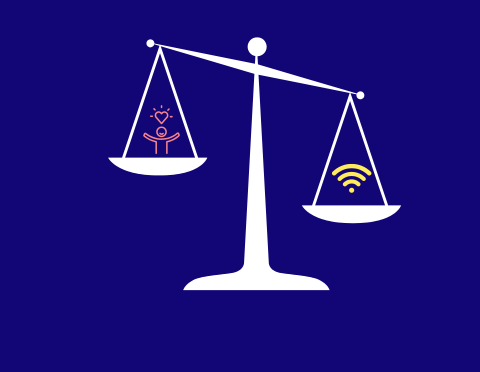Healthy Boundaries: What are they and why do you need them?
What are Boundaries?
Healthy Boundaries: Types, Crafting, and Maintenance
In both personal and professional relationships, boundaries are essential for emotional well-being, self-respect, and healthy connection. Yet many people struggle to define, communicate, or maintain them. Whether due to early life experiences, fear of conflict, or people-pleasing tendencies, weak or nonexistent boundaries can lead to resentment, burnout, and relationship dysfunction.
Understanding the types of boundaries—and how to craft and uphold them—is a powerful step toward emotional balance and relational clarity.
What Are Healthy Boundaries?
Healthy boundaries are limits we set to protect our emotional, physical, mental, and spiritual well-being. They help us honor our needs and values while also respecting the needs of others. Far from being walls, boundaries are more like fences with gates: they define what’s okay and what’s not, while still allowing for connection, flexibility, and mutual respect.
Types of Boundaries
Healthy boundaries come in various forms. Understanding the different types can help you identify where yours may need reinforcement:
1. Physical Boundaries
These relate to your personal space and physical touch. Healthy physical boundaries might include needing personal space, declining hugs, or requiring consent before touch.
2. Emotional Boundaries
These involve separating your emotions and responsibilities from those of others. They protect your emotional energy and help prevent taking on someone else’s feelings or guilt.
3. Time Boundaries
These involve how you spend your time and with whom. Setting limits on availability, saying no to excessive commitments, and reserving time for rest or self-care are examples.
4. Mental Boundaries
Mental boundaries protect your thoughts, opinions, and beliefs. They allow you to disagree respectfully and resist being manipulated or coerced into changing your views.
5. Material Boundaries
These refer to your possessions and how they’re used. For example, deciding whether you lend your car, money, or personal items—and under what terms.
6. Digital Boundaries
In today’s world, digital boundaries are increasingly important. These include when and how you communicate, what you share online, and your availability via text or social media.

Crafting your Boundaries
Boundary-setting starts with self-awareness. To craft healthy boundaries:
1. Identify Your Limits
Notice moments when you feel discomfort, resentment, or overwhelm. These feelings are often cues that a boundary is being crossed.
2. Clarify Your Values
Boundaries are rooted in your personal values—like respect, honesty, or rest. Get clear on what matters most to you and build your limits around those priorities.
3. Start Small
Begin by setting boundaries in low-stakes situations. For instance, turning off your phone after 8 PM or saying no to a social event you don’t want to attend.
4. Be Specific
Vague boundaries create confusion. Be clear and concrete: instead of “I need more space,” try “I need 30 minutes of alone time after work to decompress.”
Communicating Boundaries
Communicating your boundaries can feel uncomfortable, especially if you’re not used to asserting your needs. Here are some effective strategies:
1. Use “I” Statements
Framing your needs from your perspective reduces defensiveness. For example: “I feel overwhelmed when I get texts during meetings. I’d appreciate it if we could talk after work.”
2. **Be Direct and Respectful**
Kindness and clarity can coexist. You don’t need to over-explain or apologize for your boundary. Assertive but respectful language keeps things clear.
3. Stay Calm and Grounded
Boundary conversations may trigger emotions—yours or the other person’s. Stay centered and don’t engage in guilt or blame.
4. Reinforce When Necessary
If your boundary is repeatedly crossed, calmly restate it. Repetition is part of the process. For example: “I’ve mentioned that I need quiet time in the mornings. Please wait until after 10 AM to call.”
Maintaining Boundaries
Boundary maintenance is an ongoing process. Here’s how to strengthen your practice:
1. Expect Resistance
Especially if you’ve had loose boundaries in the past, people may push back. That doesn’t mean your boundary is wrong—it means change is happening.
2. Stay Consistent
Inconsistent boundaries send mixed messages. The more consistent you are, the more others learn to respect your limits.
3. Watch out for Boundary Fatigue
You may feel guilt, second-guessing, or emotional exhaustion, especially early on. Normalize those feelings, but don’t let them derail your progress.
4. Seek Support
Talking to a therapist or supportive friend can help you stay accountable and process complex emotions that arise around boundaries.
5. Reevaluate Periodically
Your needs evolve, and so should your boundaries. Check in with yourself regularly to see if adjustments are needed.
Setting boundaries is not selfish—it’s an act of self-respect and relational honesty. Healthy boundaries create space for authentic connection, reduce resentment, and empower you to live in alignment with your values. It may feel uncomfortable at first, especially if you’ve been conditioned to put others’ needs ahead of your own. But with practice, boundaries become second nature—and your relationships become healthier because of them.
If you’re struggling to set or maintain boundaries, therapy can be a safe space to explore your challenges and build new skills. Remember: boundaries aren’t about keeping people out; they’re about letting the right ones in—on terms that honor both of you







